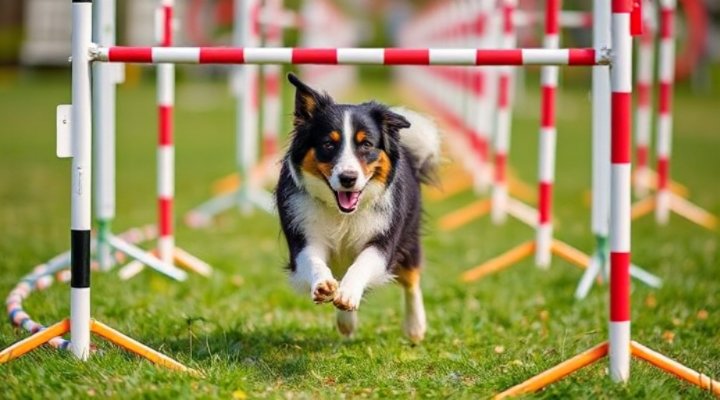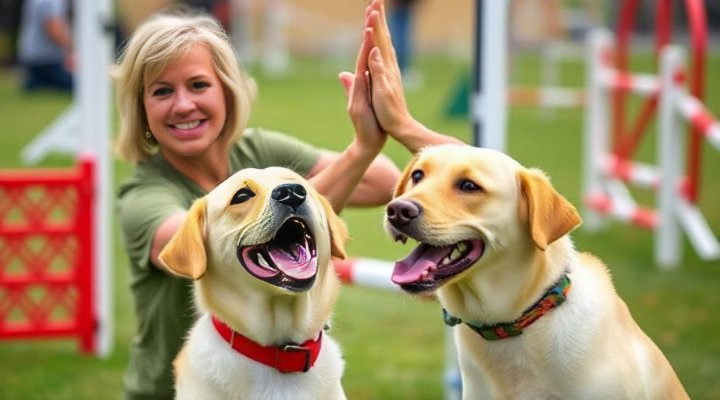Agility training for dogs is not just about teaching your furry friend to navigate obstacles; it’s a holistic approach to improving their physical fitness, mental sharpness, and overall happiness. Whether you’re a seasoned trainer or a beginner, this guide will walk you through the essentials of agility training, ensuring your dog reaps all the benefits.
Why Agility Training for Dogs is Beneficial
First and foremost, agility training for dogs offers a myriad of benefits. It enhances their physical health by improving flexibility, strength, and coordination. Moreover, it provides mental stimulation, which is crucial for preventing boredom and destructive behaviors. Above all, it strengthens the bond between you and your pet, making training sessions a fun and rewarding experience for both.

Getting Started with Agility Training
If you’re new to agility training for dogs, start with simple exercises. For instance, teaching your dog to jump over low hurdles or weave through poles can be a great introduction. Remember, patience and positive reinforcement are key. Likewise, consistency is vital to ensure your dog understands and enjoys the training process.
For more tips on basic obedience, check out our guide on Puppy Training Basics.

Essential Agility Equipment
To set up a basic agility course at home, you’ll need a few key pieces of equipment. These include hurdles, tunnels, weave poles, and an A-frame. Importantly, ensure all equipment is safe and appropriate for your dog’s size and skill level. Meanwhile, you can also improvise with household items to create a DIY agility course.
Advanced Techniques for Skilled Dogs
Once your dog masters the basics, you can introduce more complex obstacles and sequences. For example, combining multiple obstacles in a timed course can challenge your dog’s agility and focus. Additionally, participating in local agility competitions can be a fantastic way to showcase your dog’s skills and meet fellow enthusiasts.

Common Challenges and How to Overcome Them
While agility training for dogs is highly rewarding, it can come with challenges. Some dogs may initially be hesitant or fearful of certain obstacles. In such cases, gradual exposure and lots of encouragement can help. On the other hand, overly enthusiastic dogs might need guidance to focus and follow commands. For more insights, explore our article on Training a Stubborn Husky.
Health and Safety Tips
Above all, your dog’s safety should be the top priority. Always warm up before training sessions to prevent injuries. Similarly, ensure your dog stays hydrated and take breaks as needed. Most importantly, consult your vet before starting any new fitness regimen, especially for older dogs or those with health conditions.

Conclusion
In conclusion, agility training for dogs is a dynamic and enjoyable way to boost your pet’s health and happiness. By following this guide, you’ll not only enhance your dog’s physical and mental well-being but also create unforgettable bonding moments. So, grab those hurdles, set up a course, and let the fun begin!
For more training tips, visit our Top Agility Training Tips page.
Related Keywords: dog agility training, canine fitness, dog training tips, pet agility courses, improve dog health
